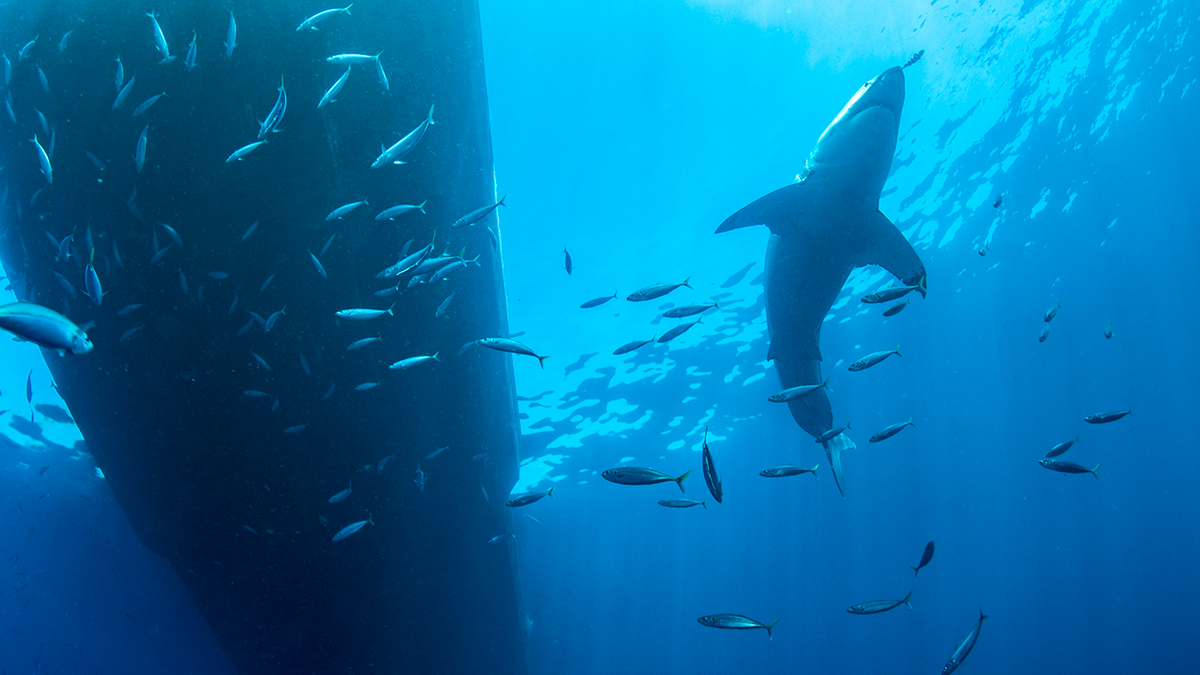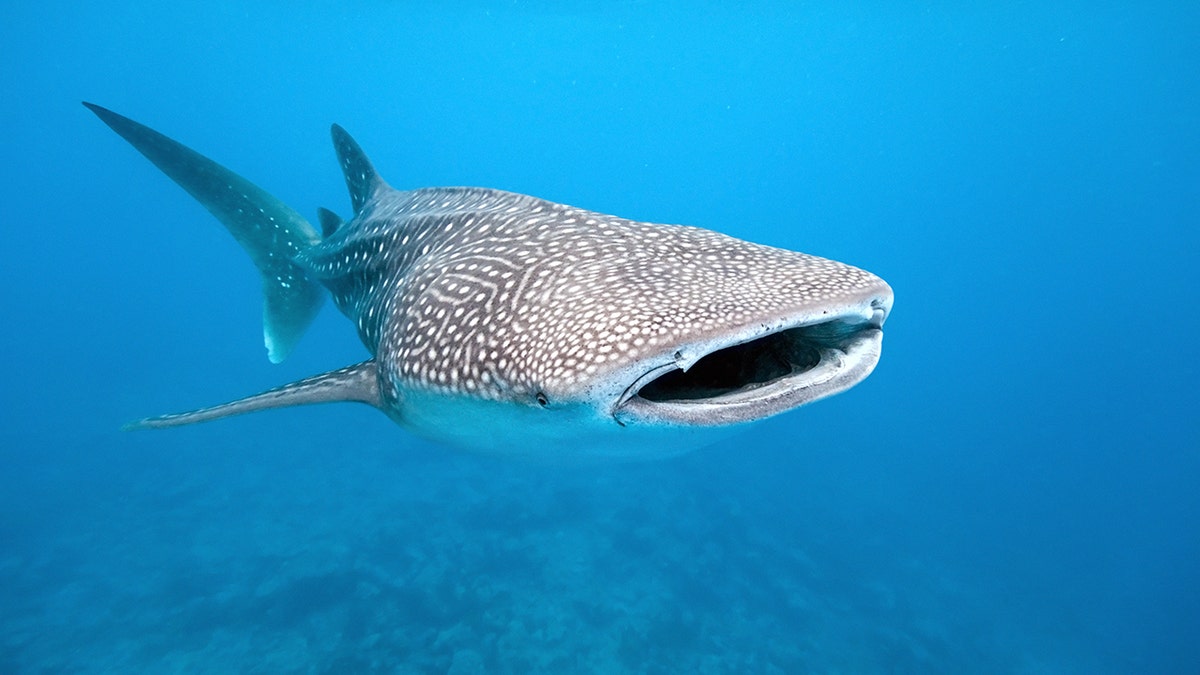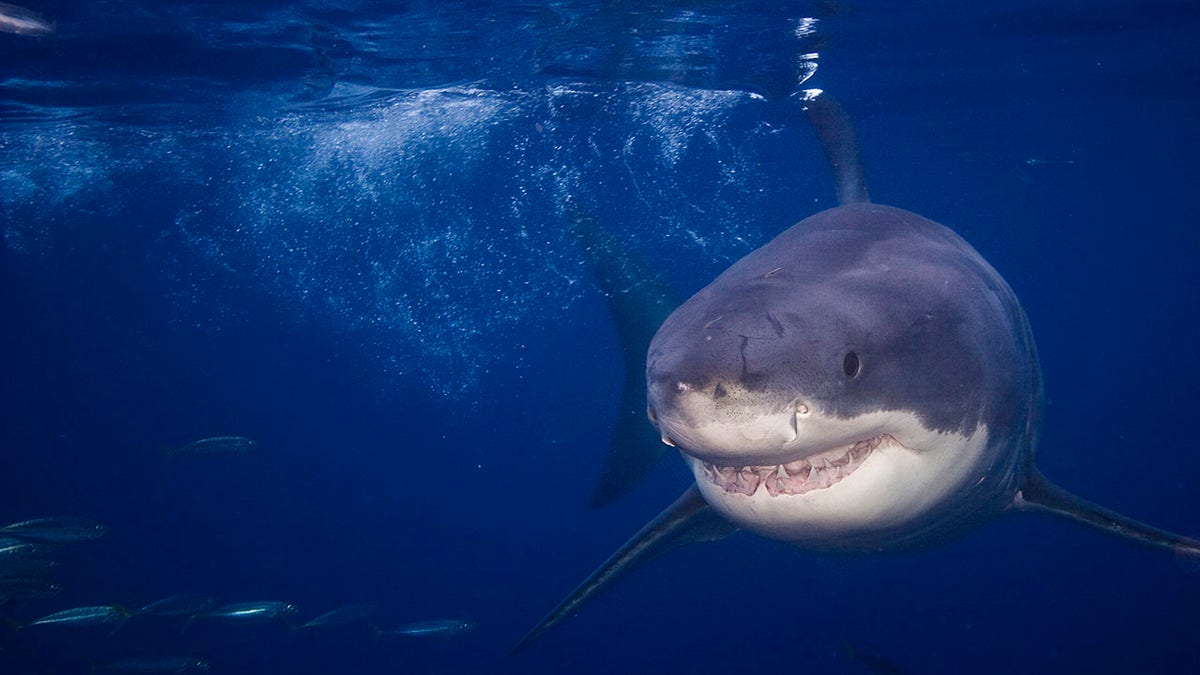Shark sightings are on the rise on the East Coast as Americans flock to beaches in hopes of cooling off.
Rockaway Beach in New York City was closed Tuesday (August 8) after a woman was hospitalized following a rare shark attack, Fox News Digital reported. She was taken to Jamaica Hospital in critical condition, but her condition was reclassified as serious/non-life threatening.
In Massachusetts, several sharks were recently spotted on Cape Cod, prompting officials to close Marconi Beach to swimming.
SHARK ATTACK IN SUMMER: HERE’S WHAT TO DO AND HOW TO STABILIZE A VICTIM IN REAL TIME
Here are 12 number-based facts about sharks, including population, size and more.

Sharks are considered to be marine fish with an elongated body, a cartilaginous skeleton and a prominent dorsal fin. (iStock)
400+ – According to the Shark Research Institute, there are more than 400 known species of sharks found in seas around the world.
1 billion – According to AZ Animals, an online animal encyclopedia, marine experts estimate the total shark population to be around one billion.
“That means there is one shark for every seven or eight humans,” the encyclopedia noted in July 2022. “They are found in all of the world’s oceans and in nearly every ocean habitat, including the open ocean, deep sea, coral reefs, shallow waters, and under Arctic ice.”
SHARK ATTACK IN SUMMER: HERE’S WHAT TO DO AND HOW TO STABILIZE A VICTIM IN REAL TIME
61.7 feet – Whale sharks are the largest living shark species. On average, whale sharks grow to 45 feet (14 meters) long, according to the National Museum of Natural History. Some can even grow to 60 feet (18 meters).

Whale sharks can be found in warm coastal waters around the world. (iStock)
The largest whale shark ever recorded measured 61.7 feet, according to a 2018 study by the Guy Harvey Research Institute at Nova Southeastern University — a university in Florida — and the Maldives Whale Shark Research Program.
6 inches – Dwarf lantern sharks are the smallest living shark species with an average size of six inches, according to the National Museum of Natural History.
The museum said the species is “smaller than a human hand” and has “only been observed a few times” in the northern part of South America, at depths between 928 and 1,440 feet.
GREAT WHITE SHARKS HAVE A SURPRISING DIET WHEN THEY'RE YOUNG, RESEARCHERS SAY
4,095 pounds – Great white sharks have one of the most powerful bites in the world. A 2008 experiment by Australian paleontologist Stephen Wroe found that a 7,000-pound great white shark could exert about 4,000 pounds of force with its powerful jaws, according to a study published in the Journal of Zoology.

Great white sharks can be found in almost every coastal and offshore water around the world. (iStock)
5 – According to Delta Dental of Washington, a dental insurance provider, most shark species have five rows of teeth.
In a blog post about Shark Week, Delta Dental of Washington said that some species of sharks “can have up to 3,000 teeth at a time” and “lose up to 100 per day.”
72 – According to the Florida Museum of Natural History, there are an average of 72 unprovoked shark attacks worldwide. More than half of these attacks – 51% – involve surfers and board sports enthusiasts.
WORLD'S OLDEST SHARK VICTIM DECODED BY SCIENTISTS
Other victims were attacked while swimming or wading (39%), body surfing or horse riding (6%) and snorkelling (4%).

Warning sign regarding great white shark bite incidents, at Newcomb Hollow Beach in Cape Cod, Massachusetts. (Lindsey Nicholson/Universal Images Group via Getty Images | iStock)
57 – In 2022, “57 unprovoked shark attacks on humans occurred worldwide,” according to a report published by Statista in March 2023. Five of those shark attacks were fatal, the data company wrote.
1 in 3.7 million – According to National Geographic, the odds of being killed by a shark are one in 3.7 million.
5-YEAR-OLD BOY APPARENTLY FINDS ANCIENT MEGALODON TOOTH WHILE ON VACATION IN SOUTH CAROLINA
100 million – According to American Oceans, an organization dedicated to coastal restoration, protection and preservation, researchers estimate that 100 million sharks are killed each year worldwide. This figure is largely due to the “destructive fishing practices” of major fishing nations, according to Greenpeace.org, which cites an article in Nature.com, a British science weekly.

There are hundreds of known species of sharks. (iStock)
450 million – Sharks have been around for 450 million years, according to the Natural History Museum in London.
The museum said the finned animal appears in the fossil record before trees existed and that sharks have survived five mass extinctions.
CLICK HERE TO SUBSCRIBE TO OUR LIFESTYLE NEWSLETTER
98 feet – The now extinct megalodon is considered the largest shark species in world history. A 1909 reconstruction of the jaw by American paleontologist Bashford Dean estimated that megalodons could have grown to 100 feet (30 meters) long, according to Fossil Era, a supplier of fossil specimens.

In this March 16, 2011, photo, children look at the jaw of a megalodon, a prehistoric shark, at the Dallas Museum of Nature and Science on March 16, 2011. The jaw measures 11 feet wide and nearly 9 feet tall, and is made up of 182 teeth collected from South Carolina rivers. (AP Photo/Rich Matthews)
In recent years, scientists have revised Dean's estimate downward to 70 feet. No complete skeleton has yet been found, but megalodon teeth are often discovered around the world.
CLICK HERE TO GET THE FOX NEWS APP
According to the Natural History Museum in London, megalodons became extinct 2.6 million years ago, at the end of the Pliocene epoch.
